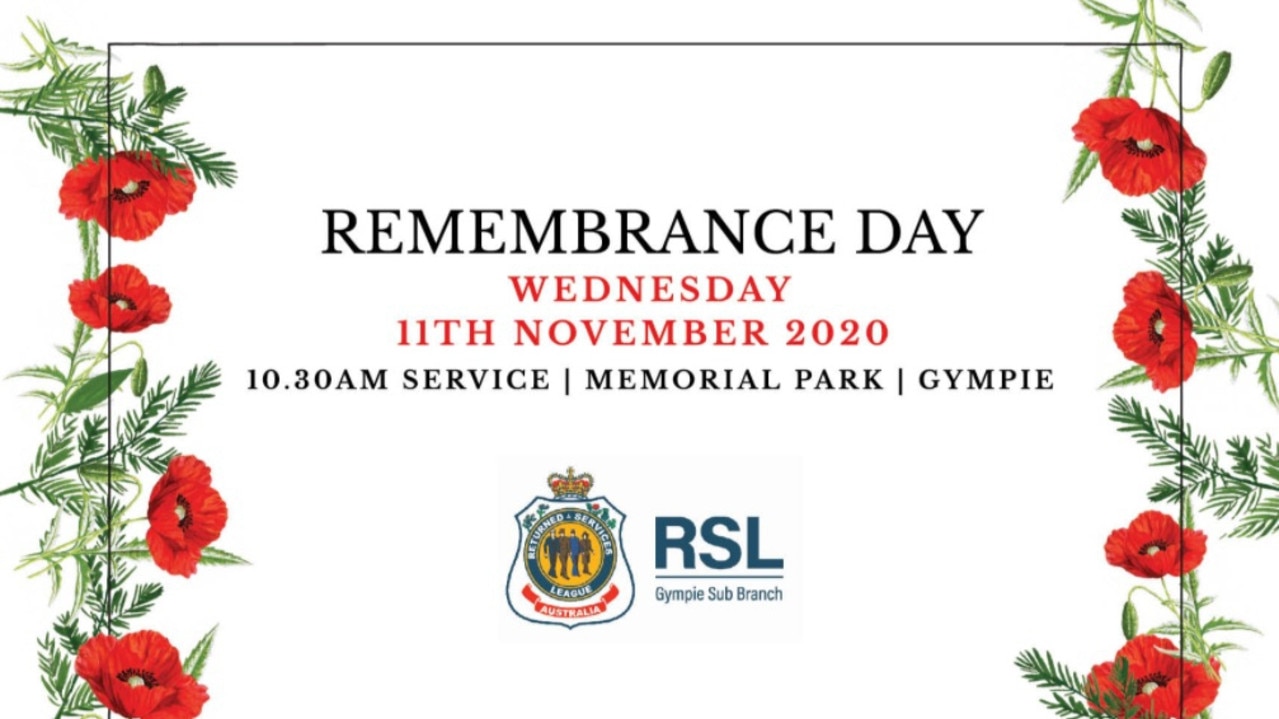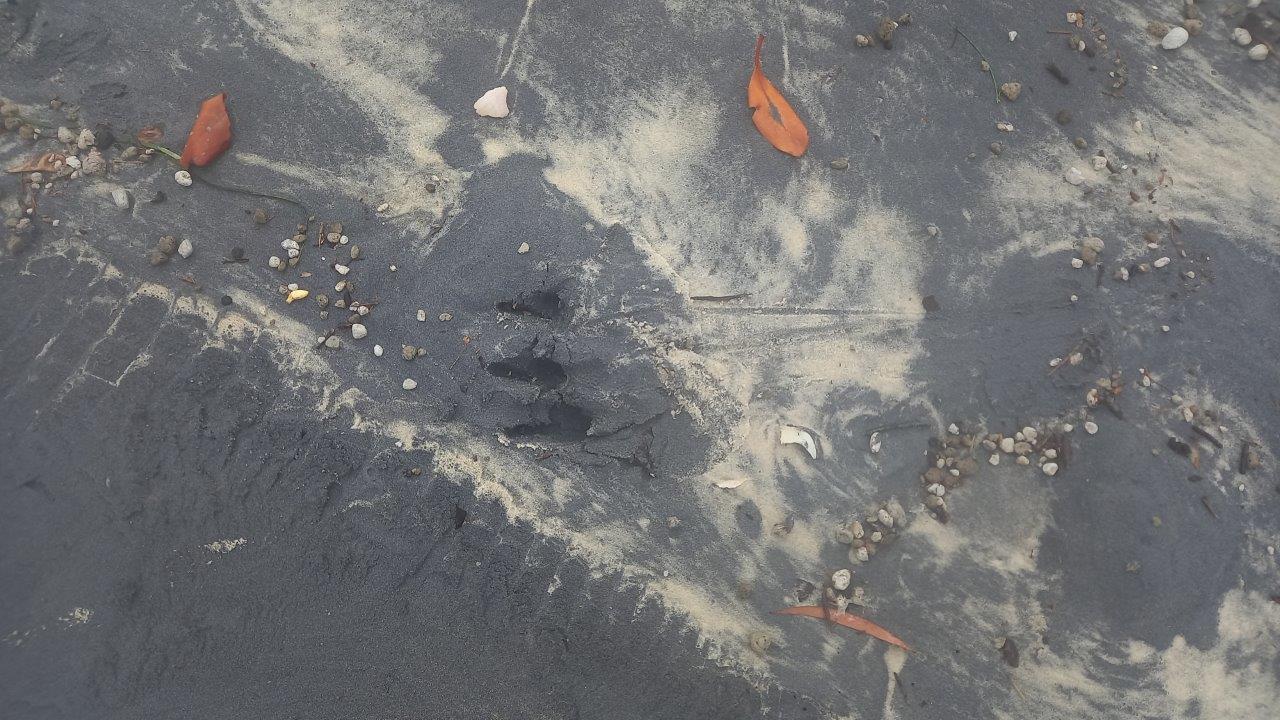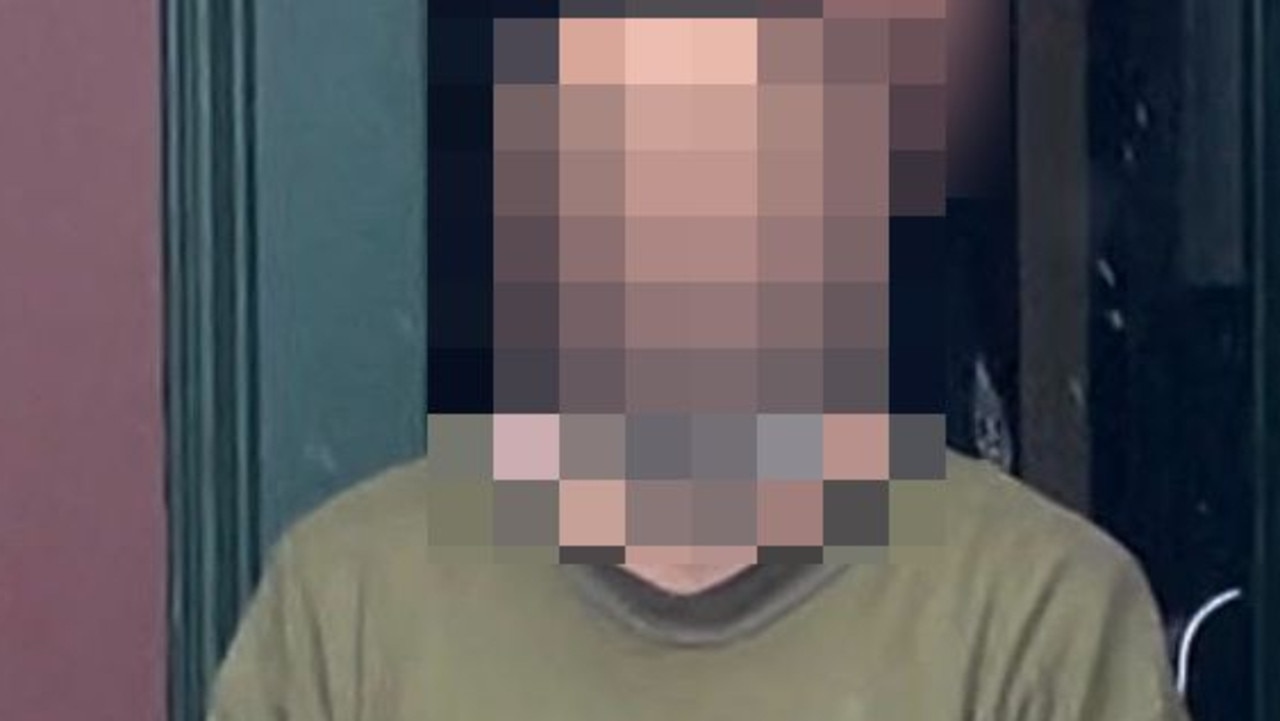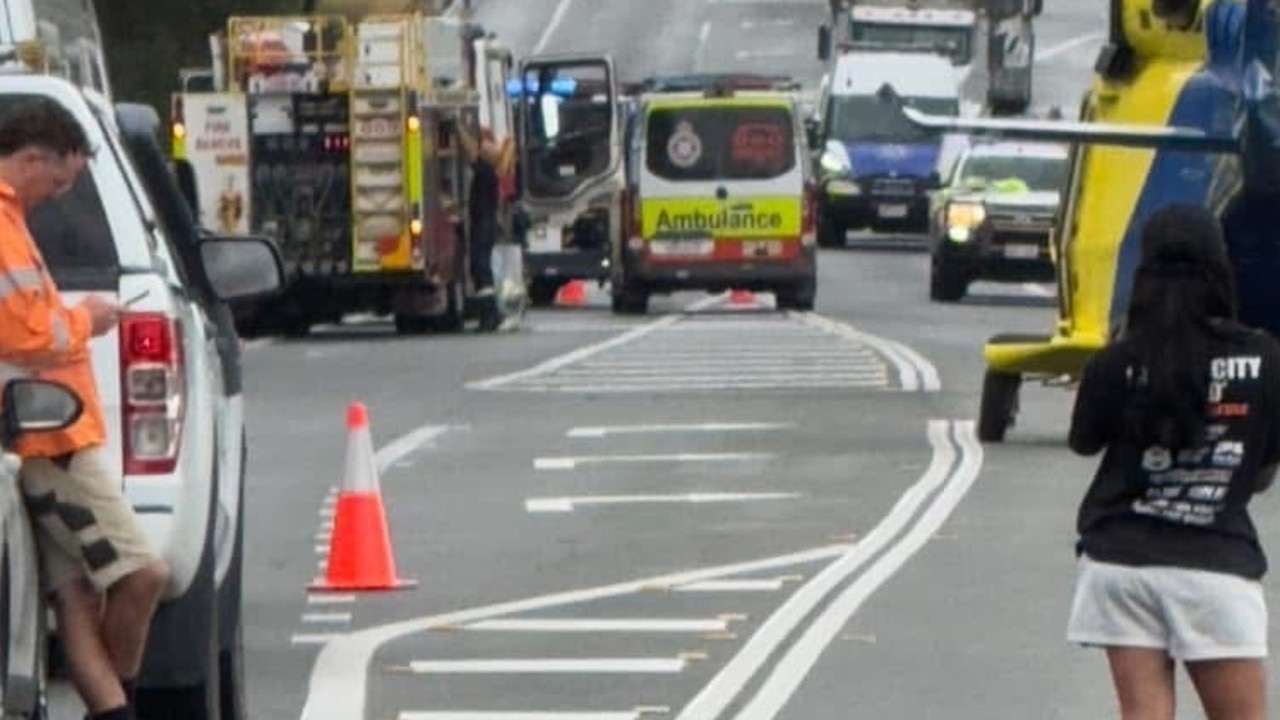REMEMBRANCE DAY: Where you can pay your respects
Services will be held throughout the Gympie region. At 11am on November 11, 1918, the guns fell silent on the Western front after four years of bloodshed. Here is where you can
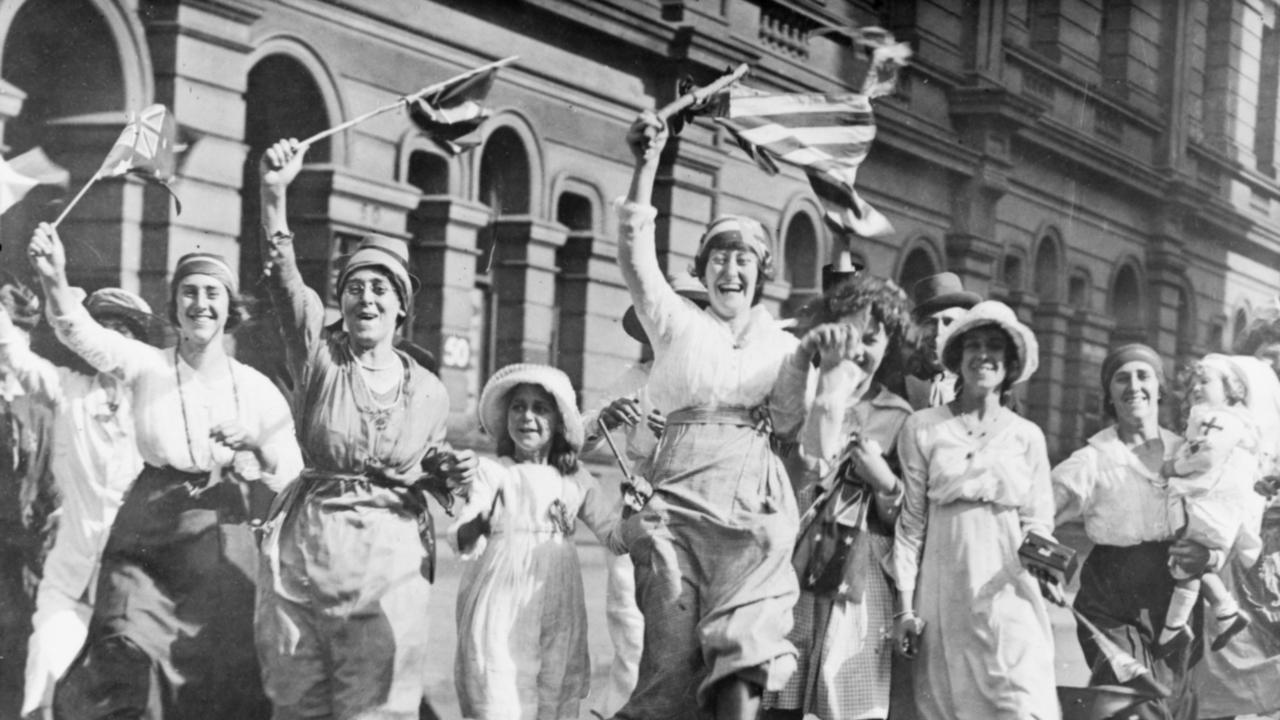
Gympie
Don't miss out on the headlines from Gympie. Followed categories will be added to My News.
AT 11am on November 11, 1918, the guns fell silent on the Western front after four years of bloodshed.
That moment became associated with the remembrance of those who had lost their lives in conflict - initially, in the ‘war to end all wars’ but eventually in all wars and conflicts from that day to this.
The Gympie RSL and RSLs throughout Australia will hold a service to commemorate Remembrance Day at 10.30am, November 11, in Memorial Park.
Couple’s getaway to the Mary Valley ends badly when dad calls cops
The lighting of the Cenotaph will take place at 6pm Tuesday night in Memorial Lane and will be attended by the Mayor and Mayoress, who will also attend Gympie’s Remembrance Day service in Memorial Park.
Child care centre developes take the Gympie council to court
Deputy Mayor Hilary Smerdon will attned the service at the Murgon RSL, councillor Jess Milne will attend the service at the Tin Can Bay Memorial Park from about 10.30am, and councillor Dolly Jensen will attend the service at the Rainbow Beach RSL.
There will be no service in Kilkivan, but Imbil will host the Mary Valley service from 10.30am at the Memorial Clock.
This event is being run in accordance with a COVID safe event checklist, and those attending will be required to sign in.
“We do request that you do not attend if you are feeling unwell or have any COVID-19 symptoms,” the RSL website states.
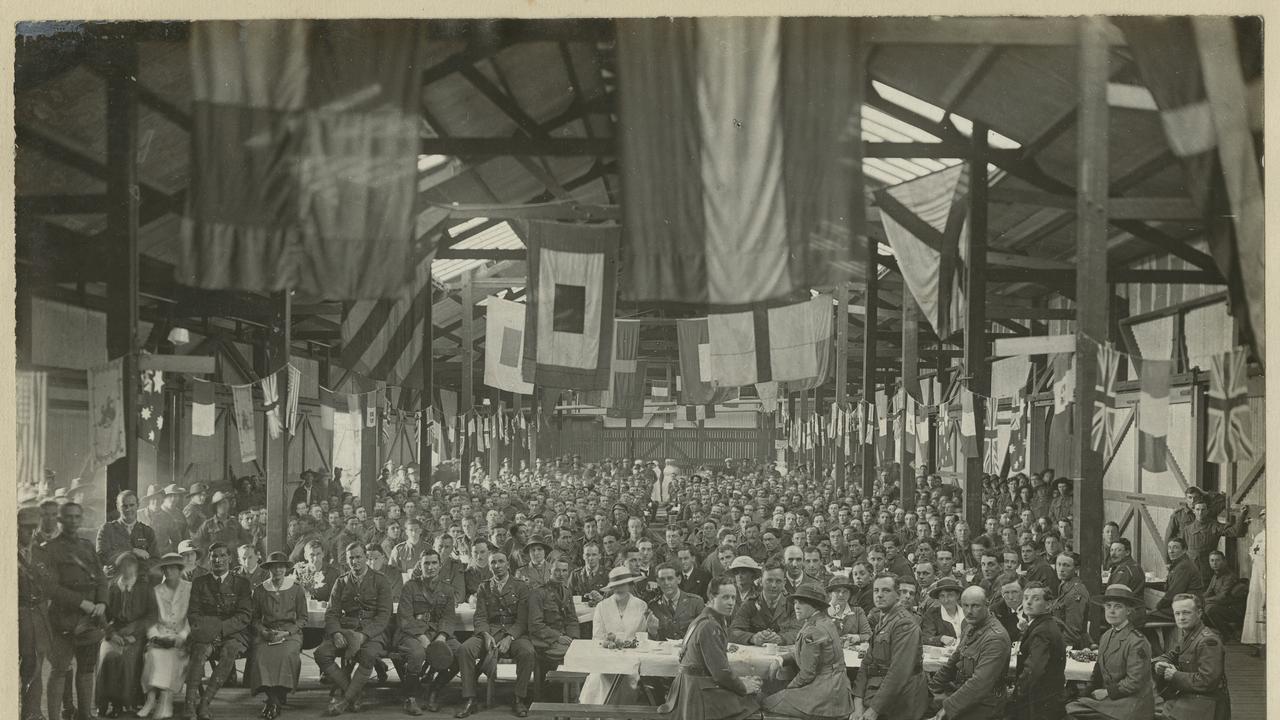
“This Remembrance Day, Wednesday, the 11th November 2020, we will remember them.”
An article on the RSL Australia website called Remembering the Armistice and written by Anita Jainesch explains why that moment in 1918 was so significant:
“It was 5am on 11 November 1918. In a railway carriage in a snowy forest in France, representatives of France, Britain and Germany signed the document that would end four years of bloody conflict. The armistice would come into effect six hours later – at the eleventh hour of the eleventh day of the eleventh month.
“News of the armistice reached Britain by 10.20am and was telegraphed to the Australian Governor General: “Most urgent armistice signed 5AM this morning”.
“Despite the late hour, the news was greeted with jubilation. The scene in Barcaldine – captured by the Townsville Daily Bulletin – was echoed across the country: The ringing of school, fire and church bells brought out hundreds of people from their beds in all sorts of attire... the gratifying news soon circulated, and the jubilation increased...
“At 9am, the streets were quite crowded with people who were worked up to a great pitch of excitement.
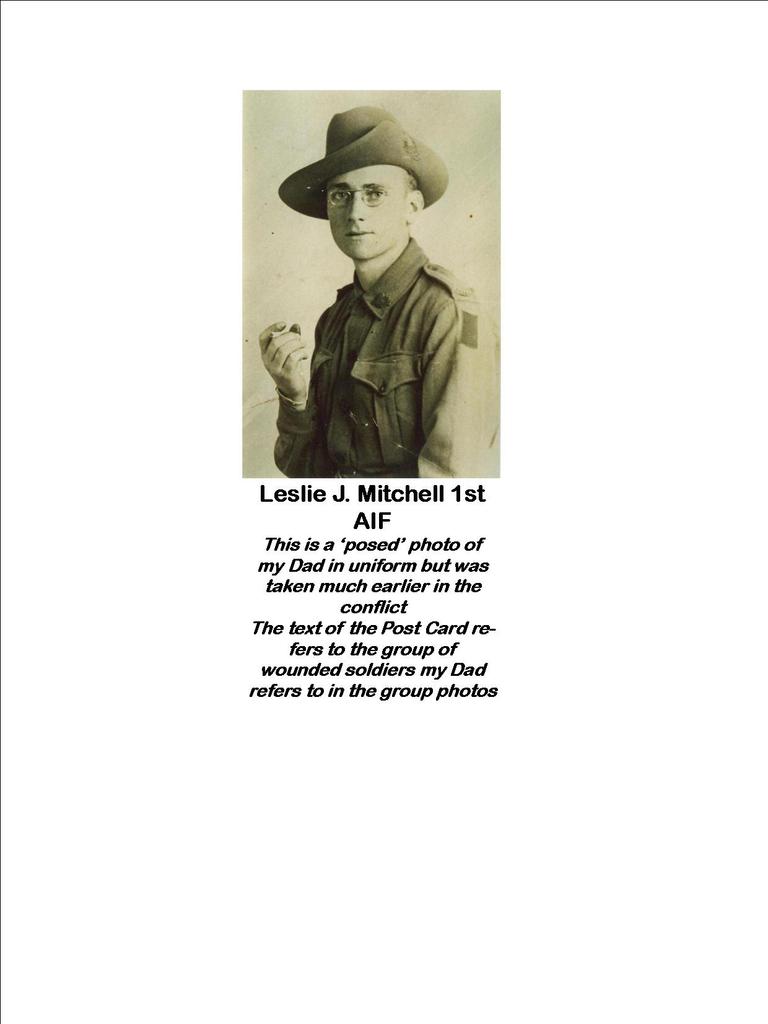
“The joy and relief, though, were tinged with pain and loss. In a nation of less than five million people, hardly a single family was left untouched; more than 60,000 soldiers had been killed and a further 156,000 had been wounded or taken prisoner. Some 23,000 soldiers were missing, and their families would never learn what had happened to their loved ones.
“At the Front, the mood was subdued. Word of the imminent ceasefire had reached the troops but the fighting continued right to the last. On that final day of conflict, there were almost 11,000 casualties, and 2738 men died.
“It was hard to believe the war was over,” Colonel Percy Dobson wrote.
“Everything was just the same, tired troops everywhere and cold, drizzly winter weather – just the same as if the war were still on.”
“It would take time for the exhausted troops to realise that they had survived and would be returning home. But for many Australian soldiers, it would be months before they saw familiar shores. And many would find that, although they had left the battlefields behind, they had brought the horror of what they had lived through home.
“Although the armistice ended the fighting, it would take six months of negotiation before the Treaty of Versailles was signed in June 1919.
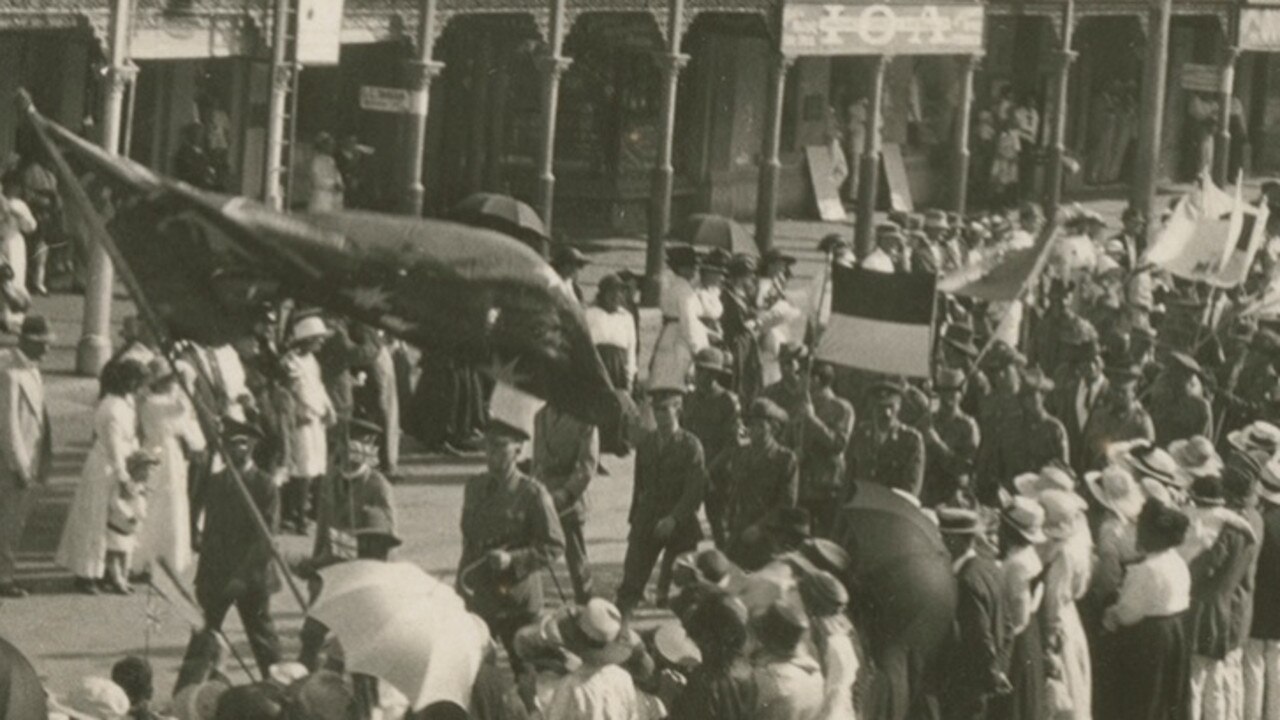
Australian Prime Minister Billy Hughes had fought for Australia to represent its own interests at the peace conference, arguing the nation had won this right by its disproportional sacrifice during the war.
“As a result, he and Deputy Prime Minister Joseph Cook both added their signatures to the document – the first time that Australia had signed an international treaty.
“In towns and cities all over Australia, memorials and rolls of honour spoke of the terrible toll that ‘the war to end all wars’ had taken on families and communities.
“The moment of the ceasefire gradually became associated with the remembrance of those who lost their lives during the war.
“On the first anniversary of the armistice, King George V asked all the people of the British Empire to stop and observe two minutes’ silence at 11am.
“This moment of respect and reflection continues to be observed during commemorative services on Remembrance Day, when we remember all those who have served in the Australian Defence Force, in World War I and in all wars and conflicts since.”
